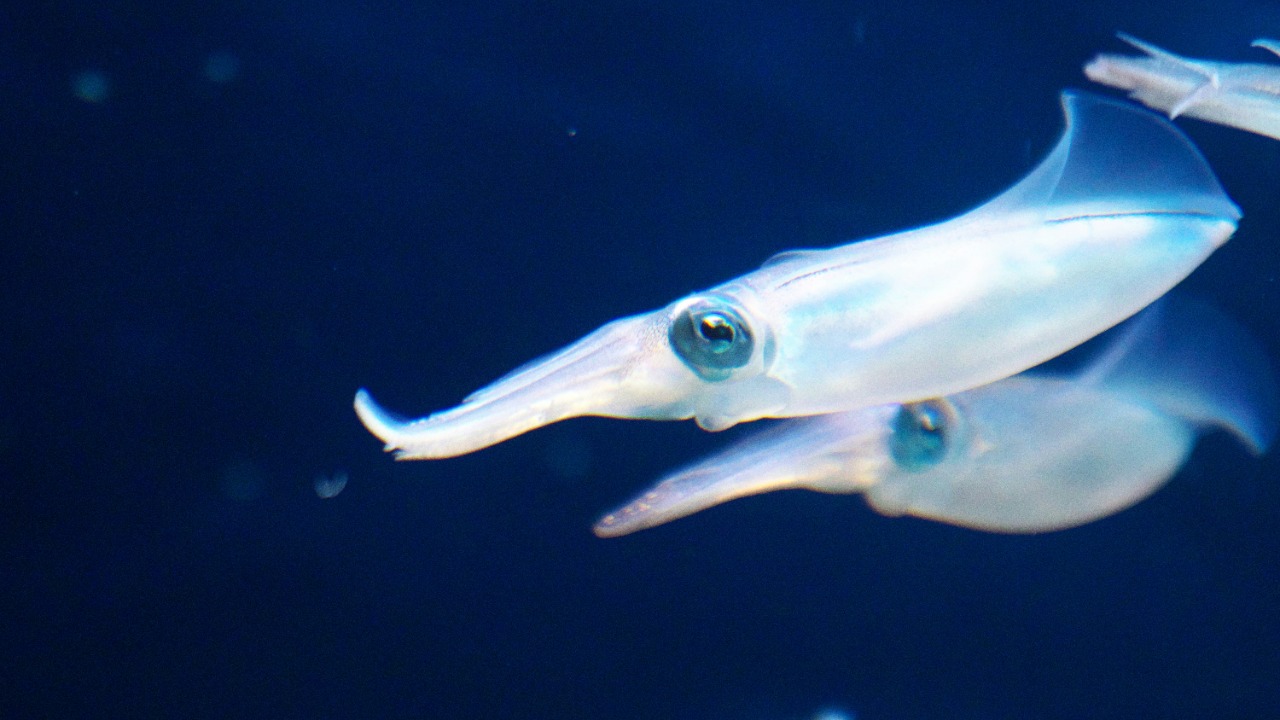
In a significant leap forward for neuroscience, researchers at the University of California, Santa Barbara, have successfully created a transparent squid. This feat, accomplished in 2023 through genetic editing of the squid’s genome to suppress pigment-producing cells, allows scientists to observe the creature’s living brain and organs in real-time without invasive procedures. This innovation builds on the groundbreaking work from 2020, where scientists first created gene-edited squid, marking a breakthrough in brain health research. The progress in cephalopod neuroscience could potentially accelerate discoveries in human brain disorders and complement natural brain-boosting strategies, such as consuming specific nuts and seeds.
The Science Behind Transparent Squid
The creation of the transparent squid was made possible through the use of CRISPR technology, a revolutionary tool in genetic editing. This technology was used to target and suppress genes responsible for melanin production in the squid’s skin and organs, resulting in a see-through creature. The transparency of the squid allows scientists to observe its brain activity in real-time while it is still alive, eliminating the need for dissection or fixation. This is a significant advancement in the field of neuroscience, as it provides a unique opportunity to study neural activity in complex invertebrates.
The squid’s distributed nervous system serves as an excellent model for studying neural circuits. This is a continuation of the work started in 2020, where gene-editing techniques were first used to establish squid as viable lab models. The ability to observe the squid’s brain activity in real-time could potentially lead to significant discoveries in the field of neuroscience.
Historical Context of Squid in Neuroscience
Squid have long been used in neuroscience due to their large neurons and complex behaviors. The 2020 achievement of gene-edited squid marked a foundational breakthrough in brain health research, enabling precise manipulation of squid genes for the first time in a non-model organism. The 2023 transparent variant builds directly on this tradition, providing a new tool for scientists to study neural development.
Traditional squid studies have faced limitations, such as the opacity of the squid preventing live imaging. The new method of creating transparent squid addresses this issue, allowing for deeper insights into neural development and function. This could potentially lead to significant advancements in our understanding of the brain and related disorders.
Applications for Brain Research
The ability to observe the transparent squid’s living brain could reveal mechanisms of neural communication, potentially informing treatments for human neurodegenerative diseases. Furthermore, the potential to study squid learning and memory circuits non-invasively could advance broader brain health research. These advancements build on the foundation laid by the 2020 gene-editing techniques.
Insights gained from studying the cephalopod brain could have direct applications to human health, such as modeling synaptic plasticity. These scientific advancements can be complemented by lifestyle factors, such as diet, in supporting brain function. For instance, research from 2025 identified specific nuts and seeds that boost brain power and cognitive function.
Nutritional Ties to Brain Health
Specific nuts and seeds, such as walnuts and flaxseeds, have been highlighted for their omega-3 content that boosts brain power and cognitive function. These foods support neural health through antioxidants and healthy fats, providing a non-invasive, everyday complement to advanced research like transparent squid studies. Integrating dietary brain boosters with lab-based neuroscience could holistically advance our understanding of brain resilience and repair.
Challenges and Ethical Considerations
While the creation of the transparent squid is a significant achievement, it is not without its challenges. The 2023 experiments encountered hurdles in maintaining the squid’s viability post-editing, with survival rates and imaging clarity being key issues. Furthermore, the ethical implications of gene-editing cephalopods must be considered. The 2020 gene-editing experiments raised questions about welfare in non-vertebrate models, and these concerns continue with the creation of the transparent squid.
It is crucial to consider the broader impacts on marine research ethics, ensuring that transparency in both squid biology and scientific practices aligns with animal welfare standards. This includes ensuring that the squid are treated humanely and that the benefits of the research outweigh any potential harm to the animals.
Future Directions in Cephalopod Models
Looking to the future, there are plans to expand the use of transparent squid for studying environmental stressors on brain function. This would extend the innovations of 2023 to the field of climate-related neuroscience. Additionally, there is potential for integration with advanced imaging tools to map full neural networks, building on the foundations laid by the 2020 gene-editing techniques.
There is also the potential for cross-disciplinary applications, combining squid models with human brain health strategies like nutrition to accelerate therapeutic discoveries. By combining these different approaches, we can gain a more holistic understanding of the brain and how to support its health and function.
More from MorningOverview